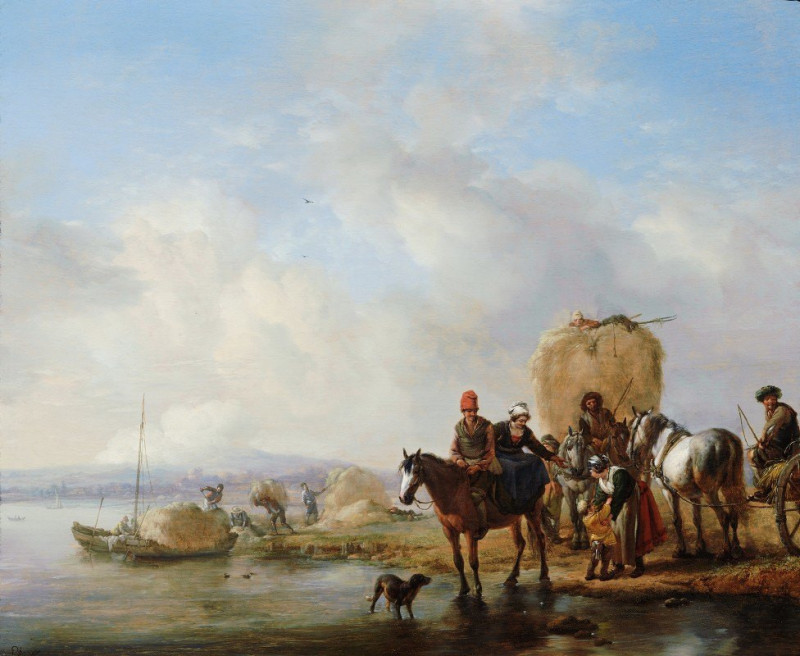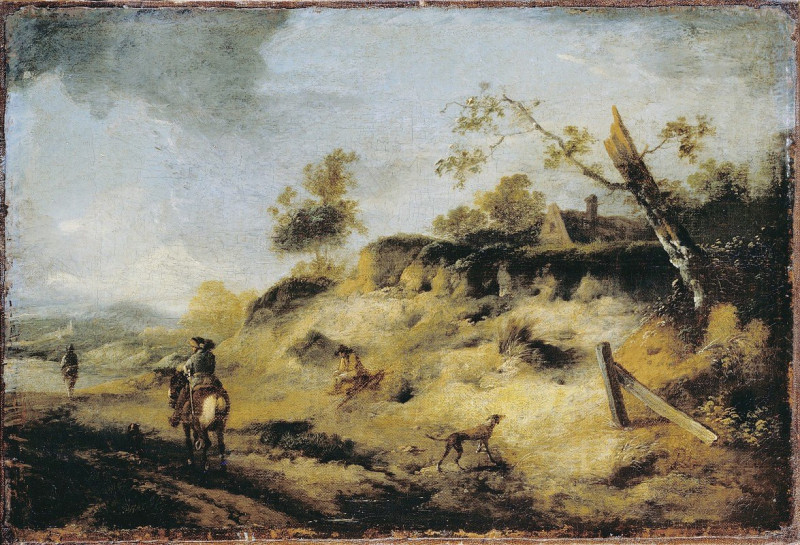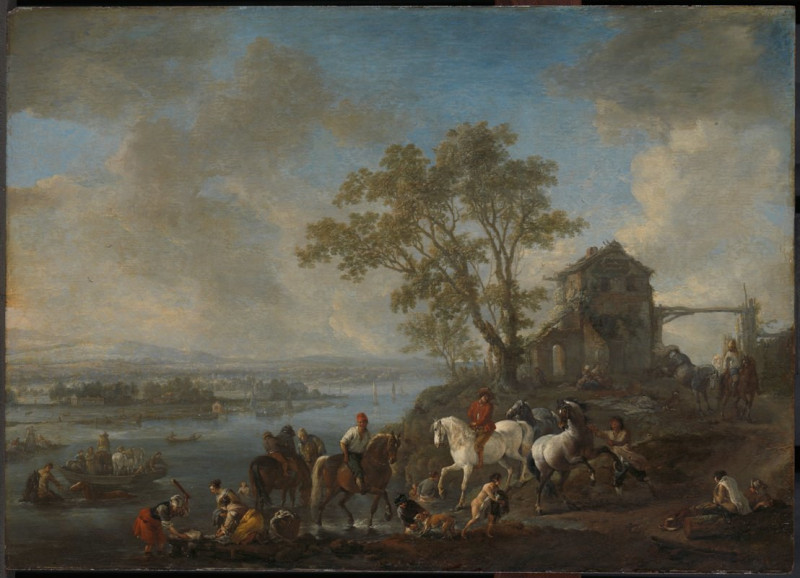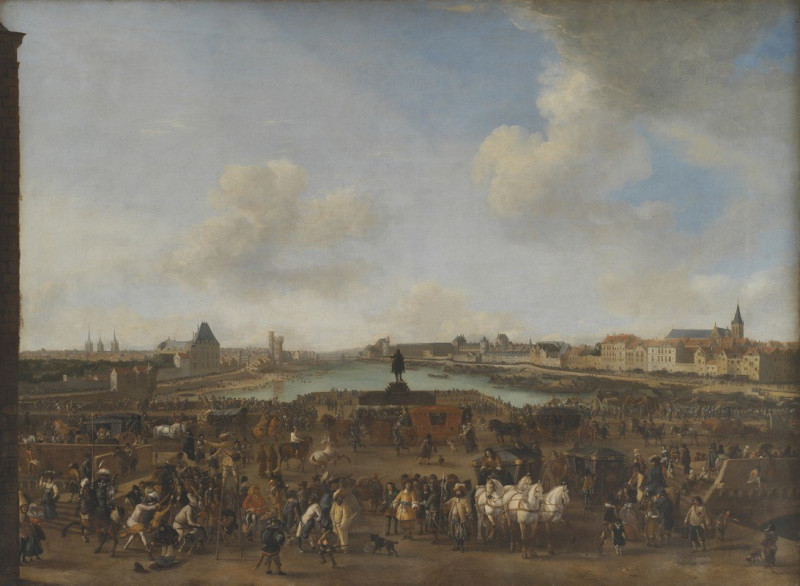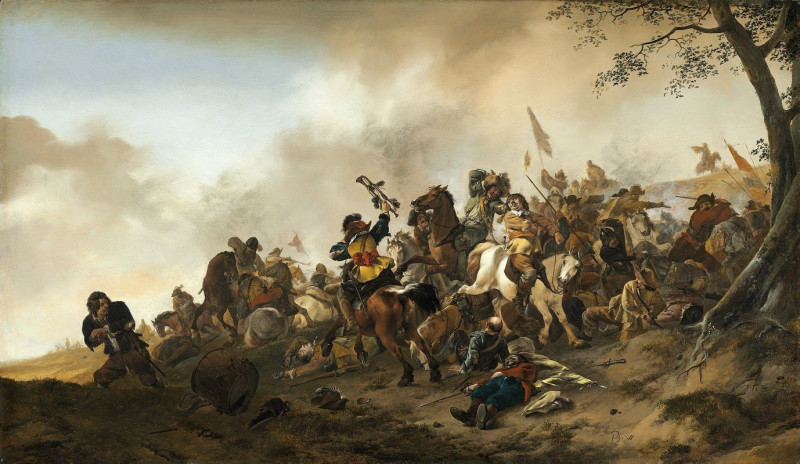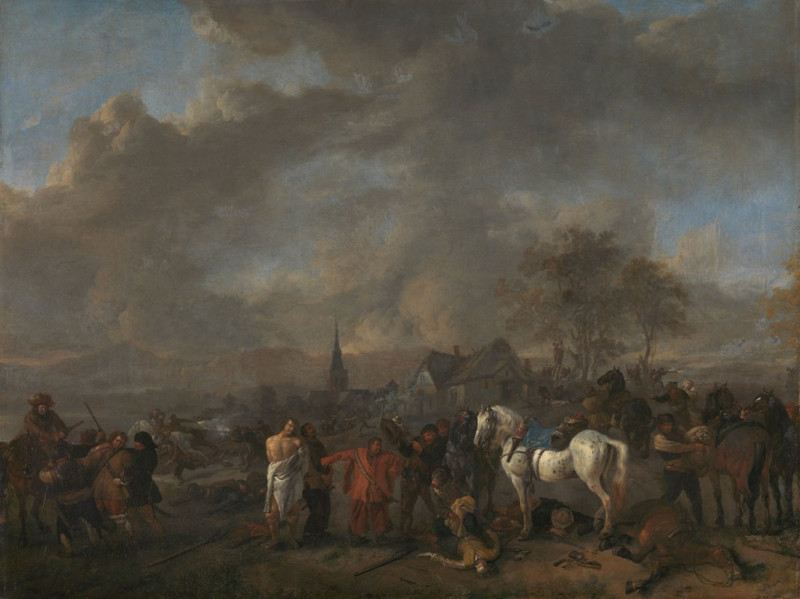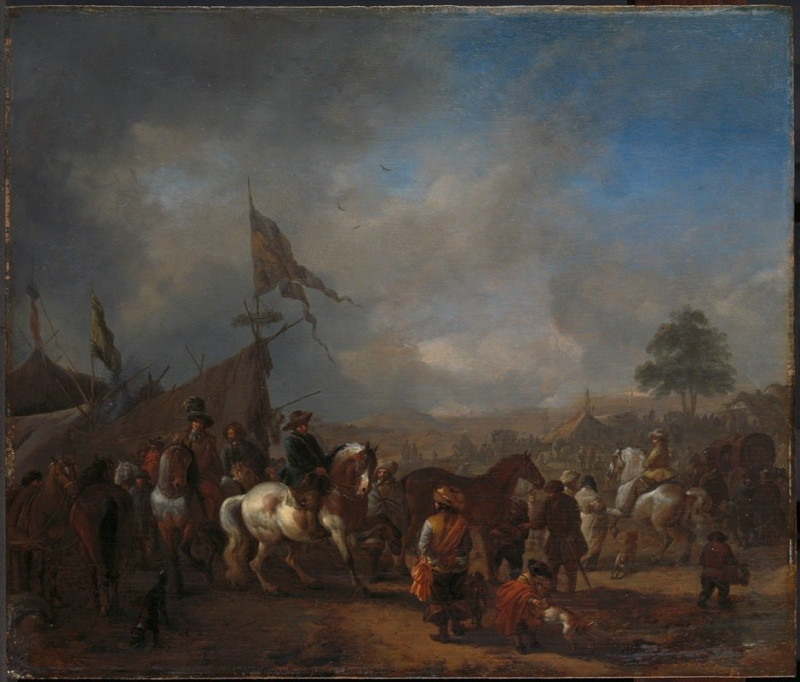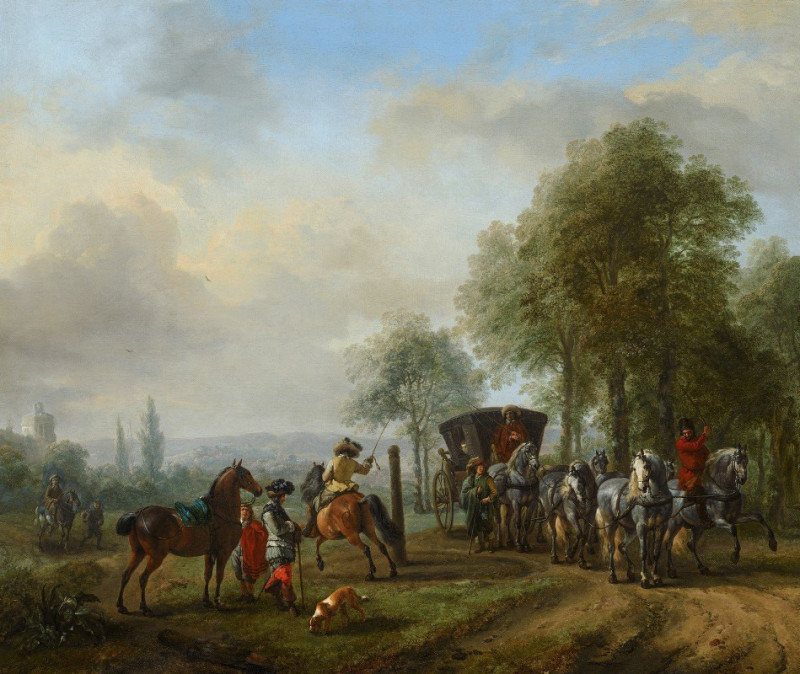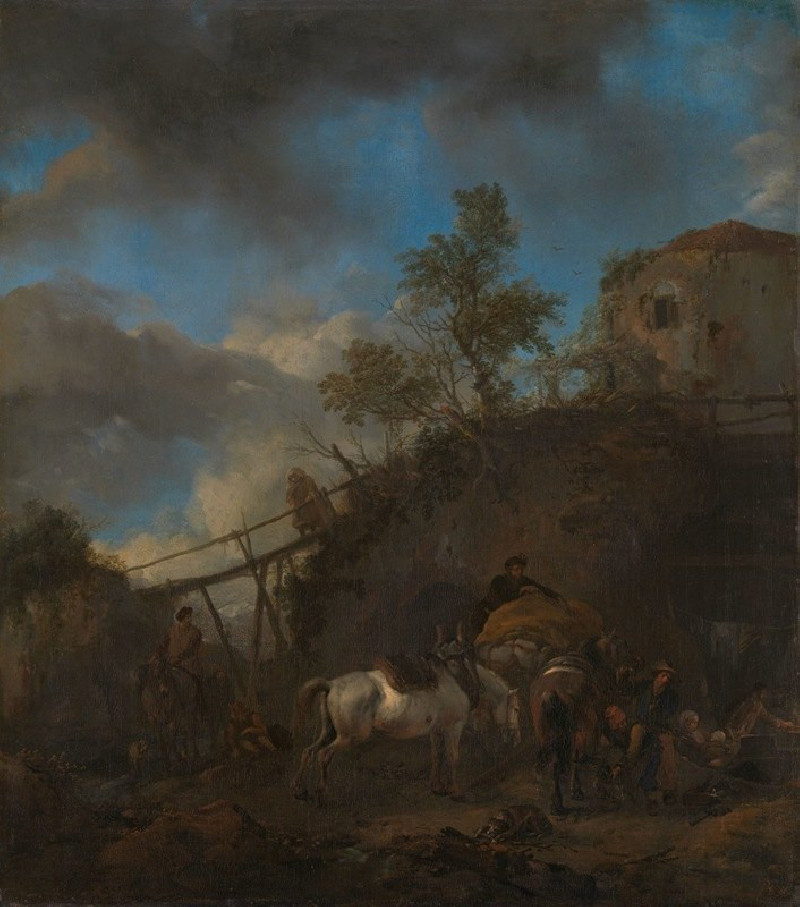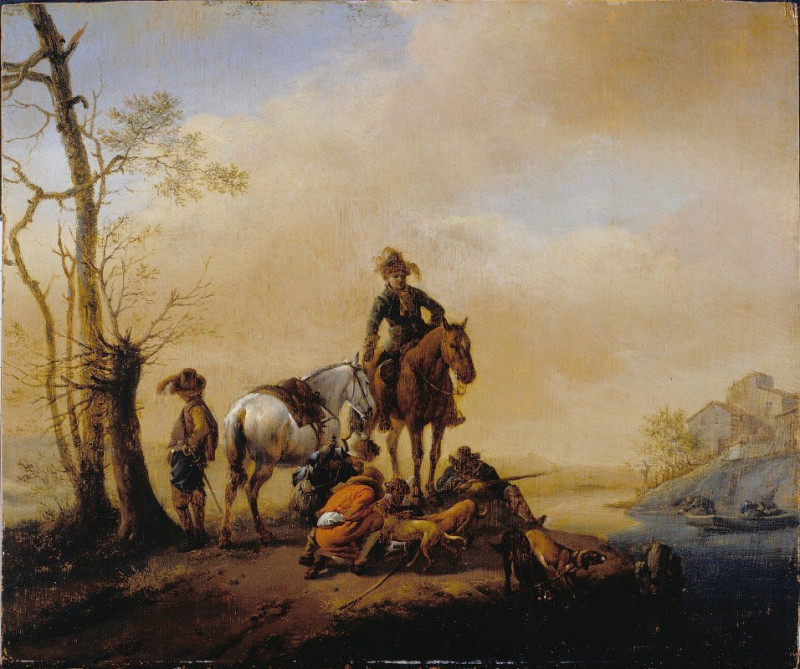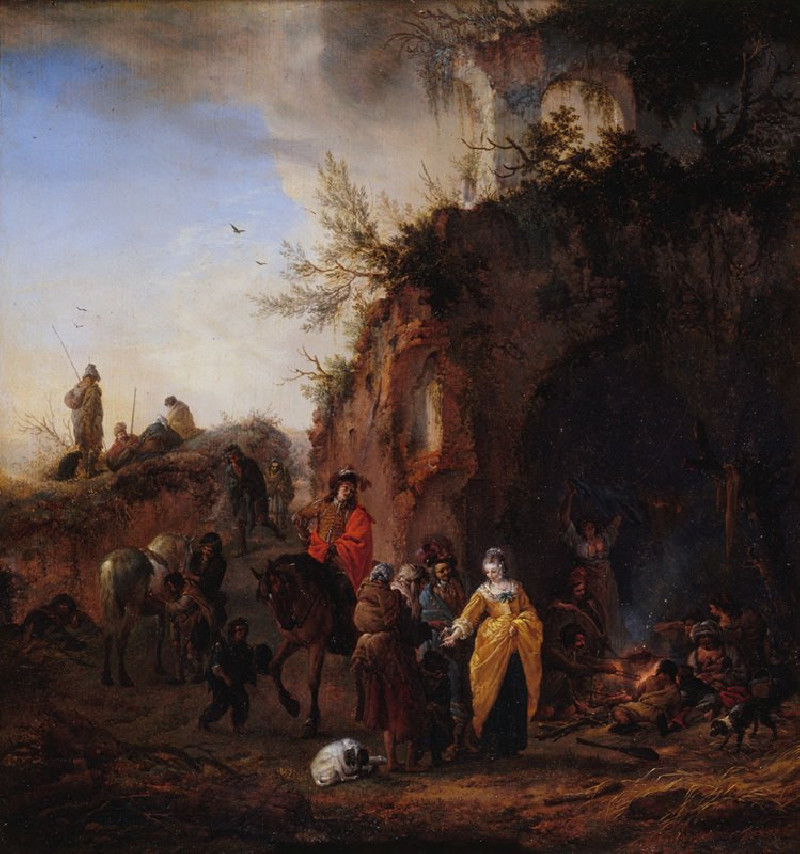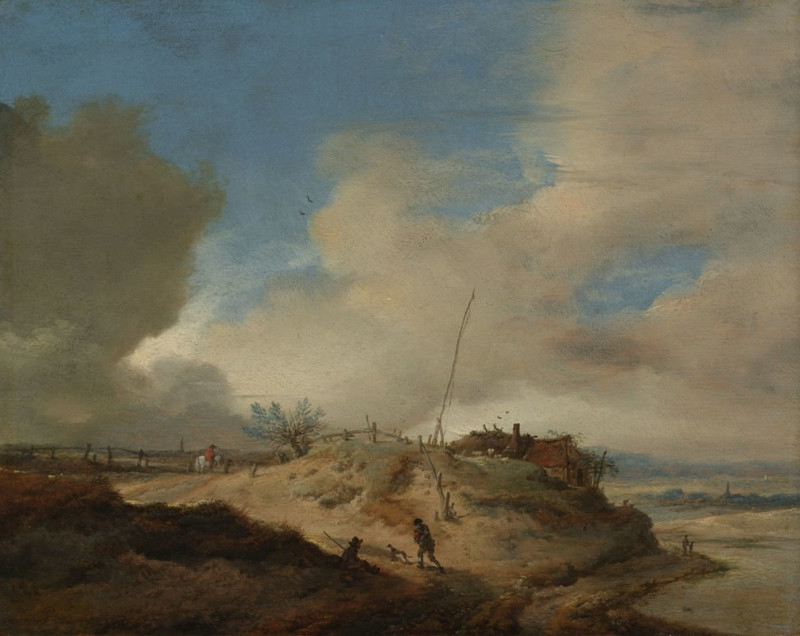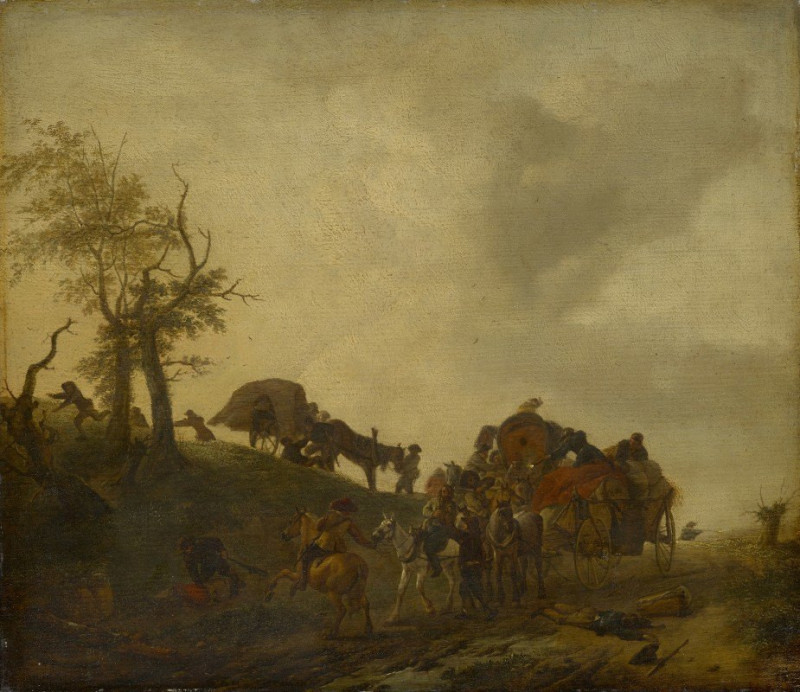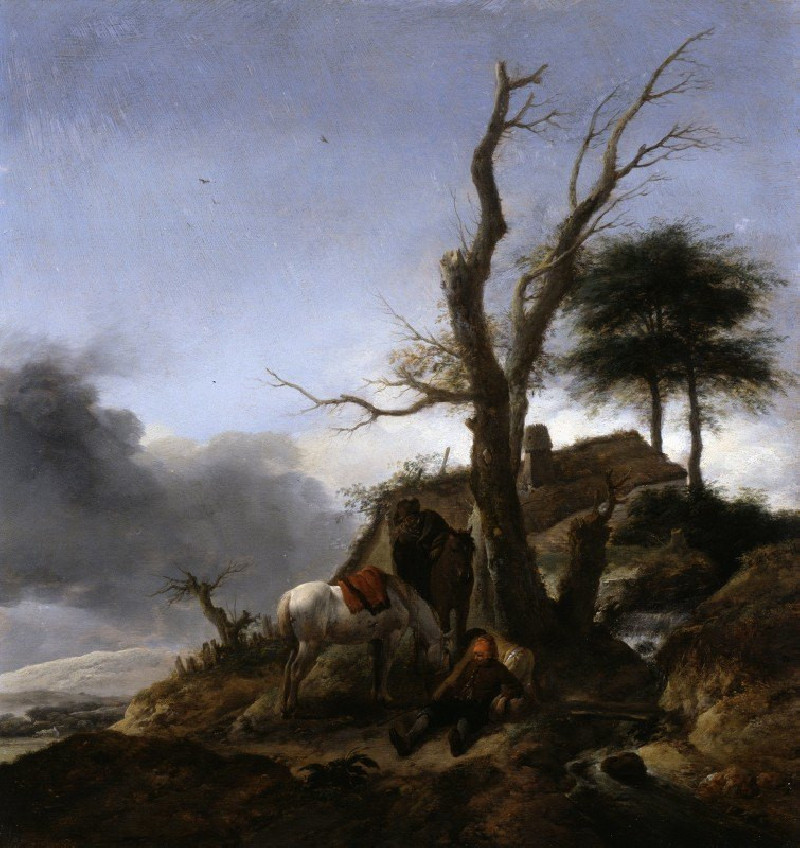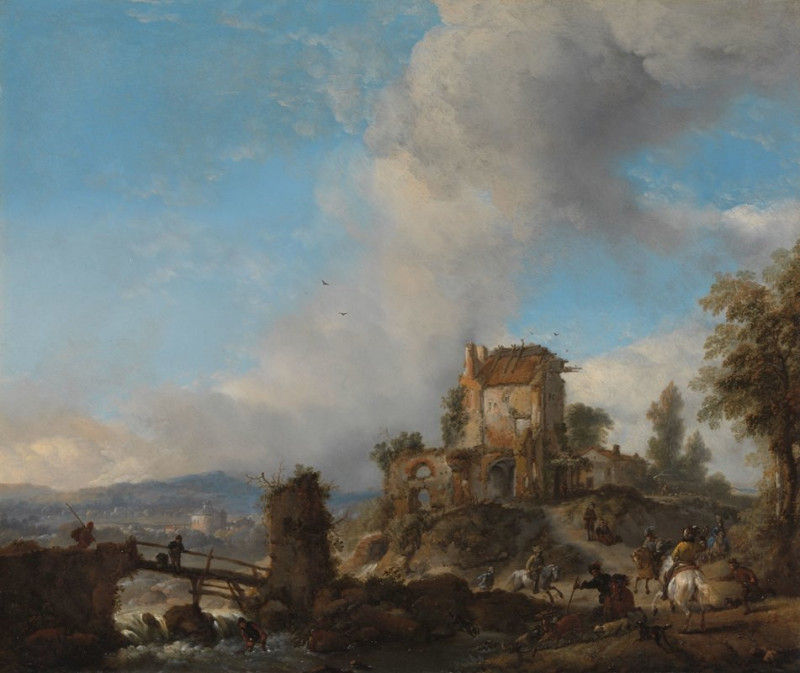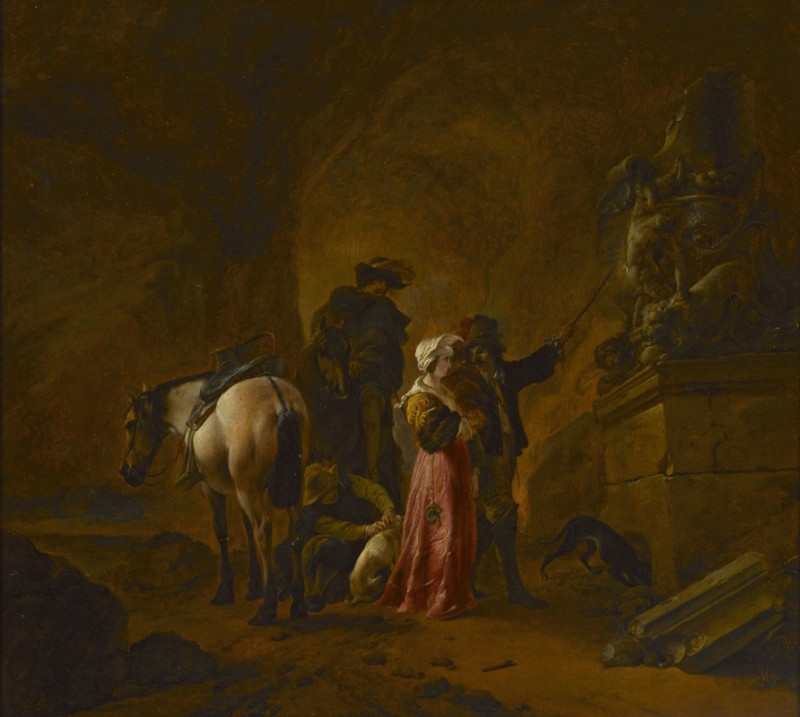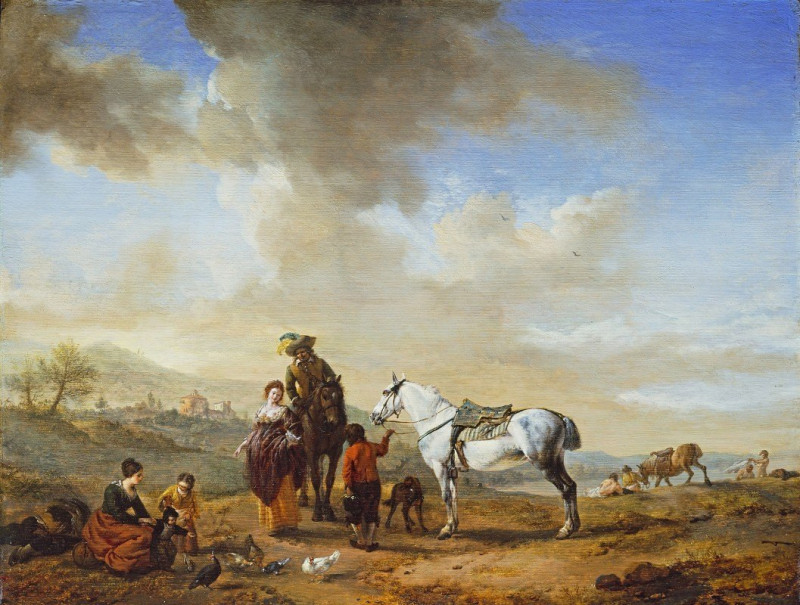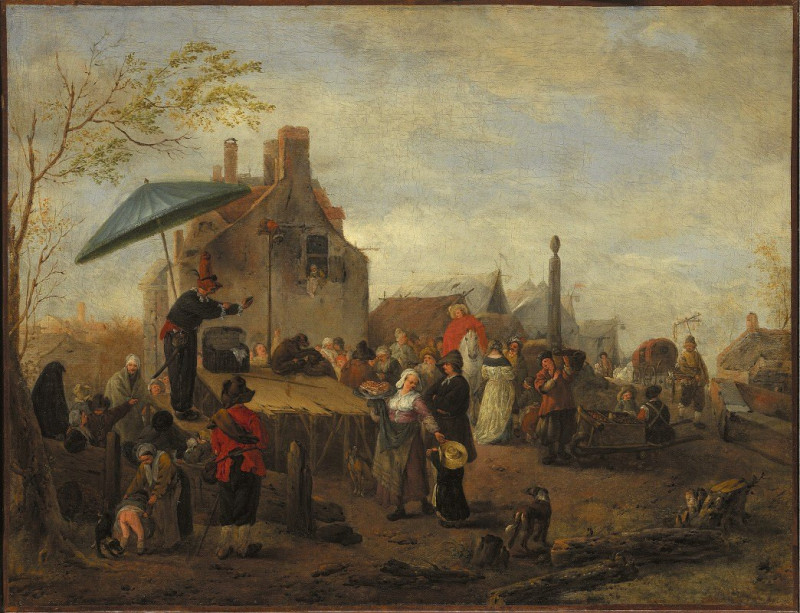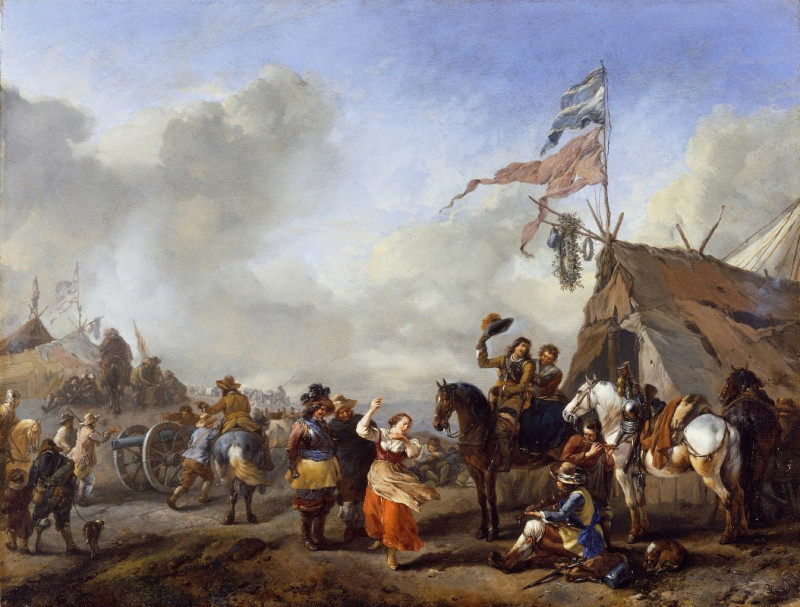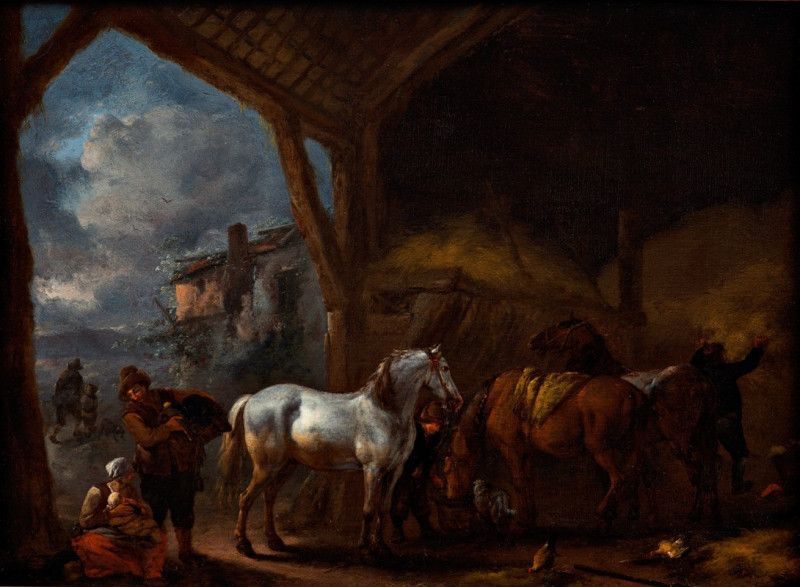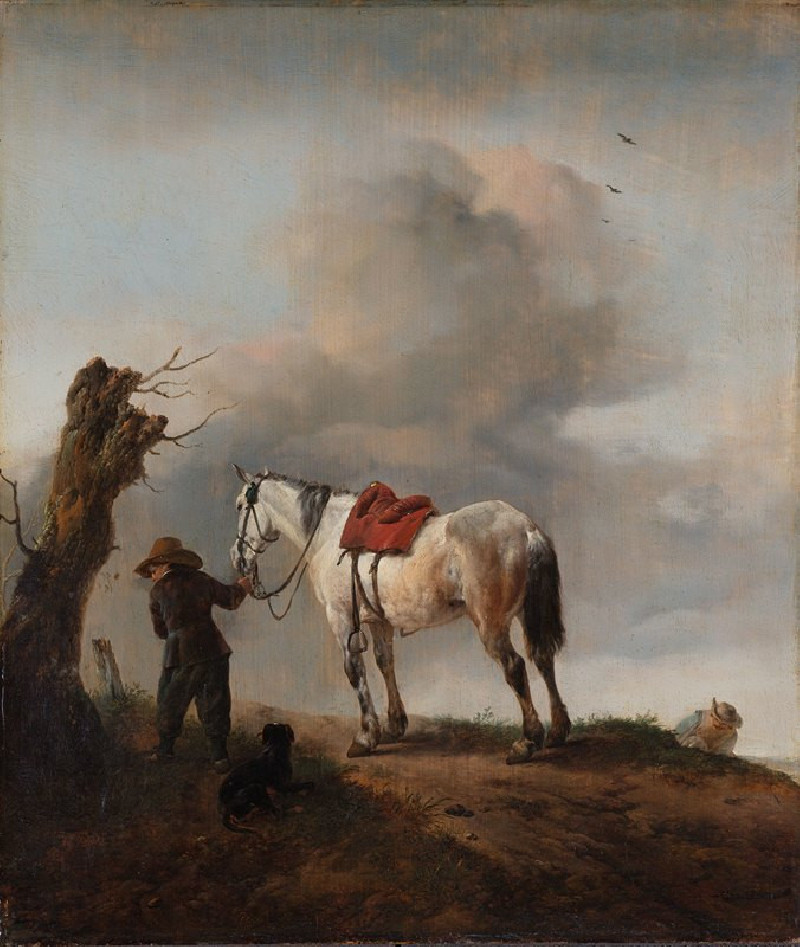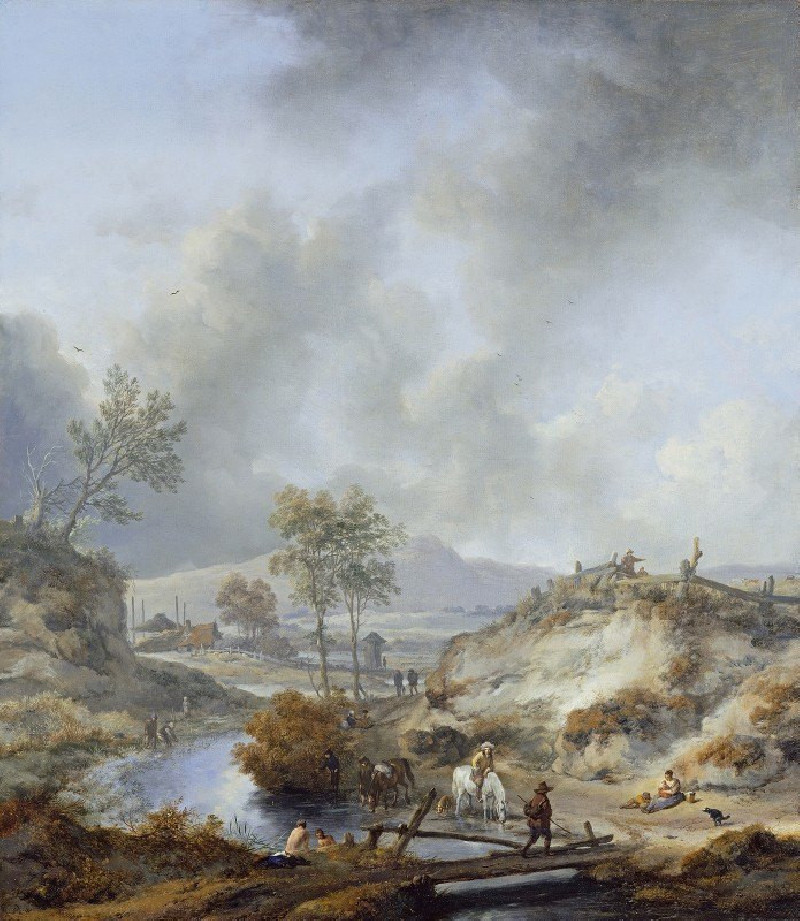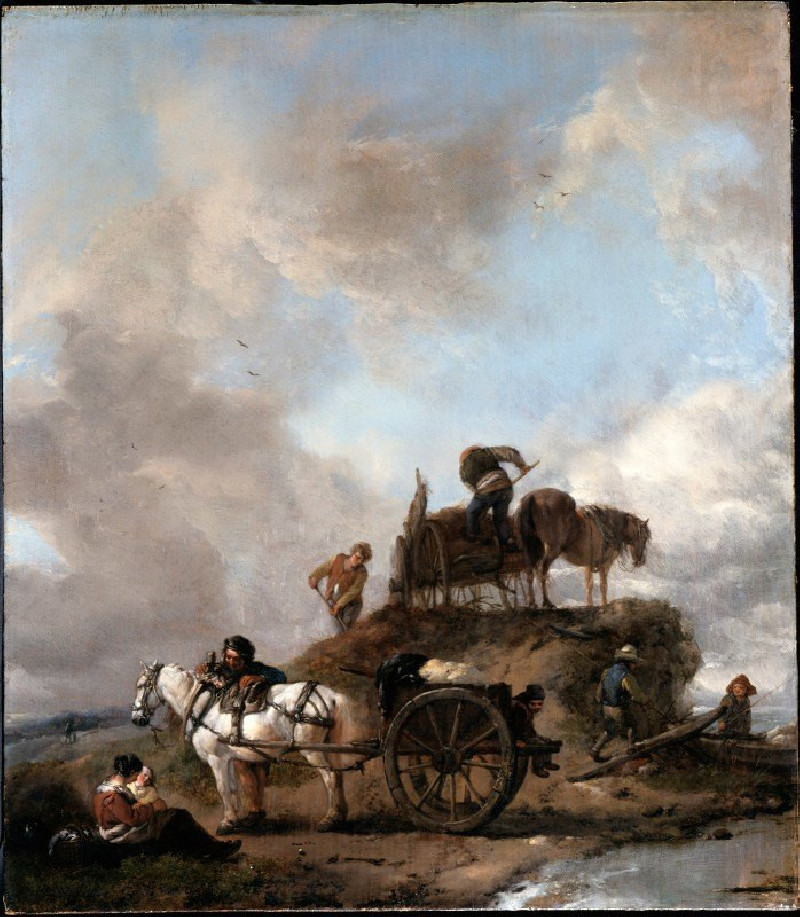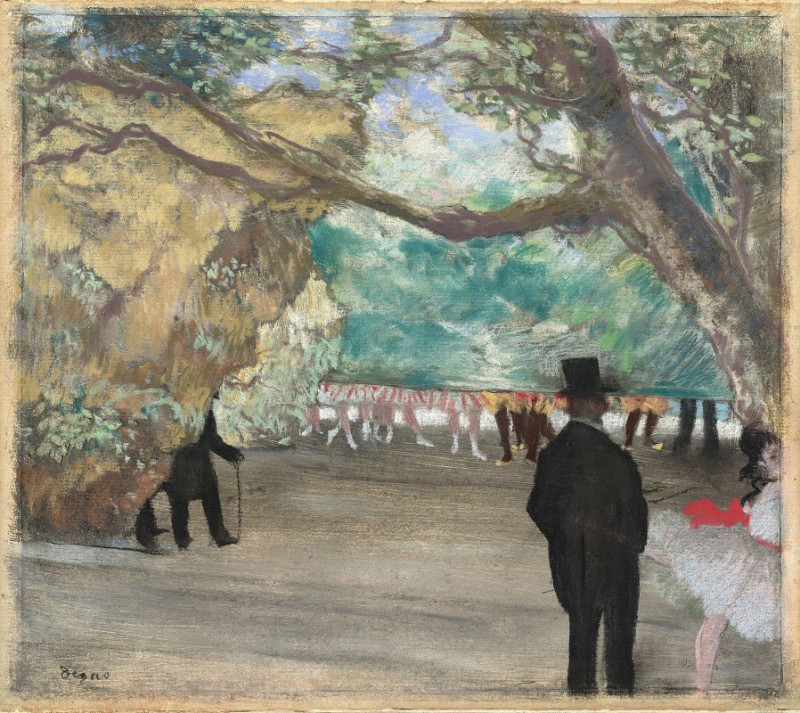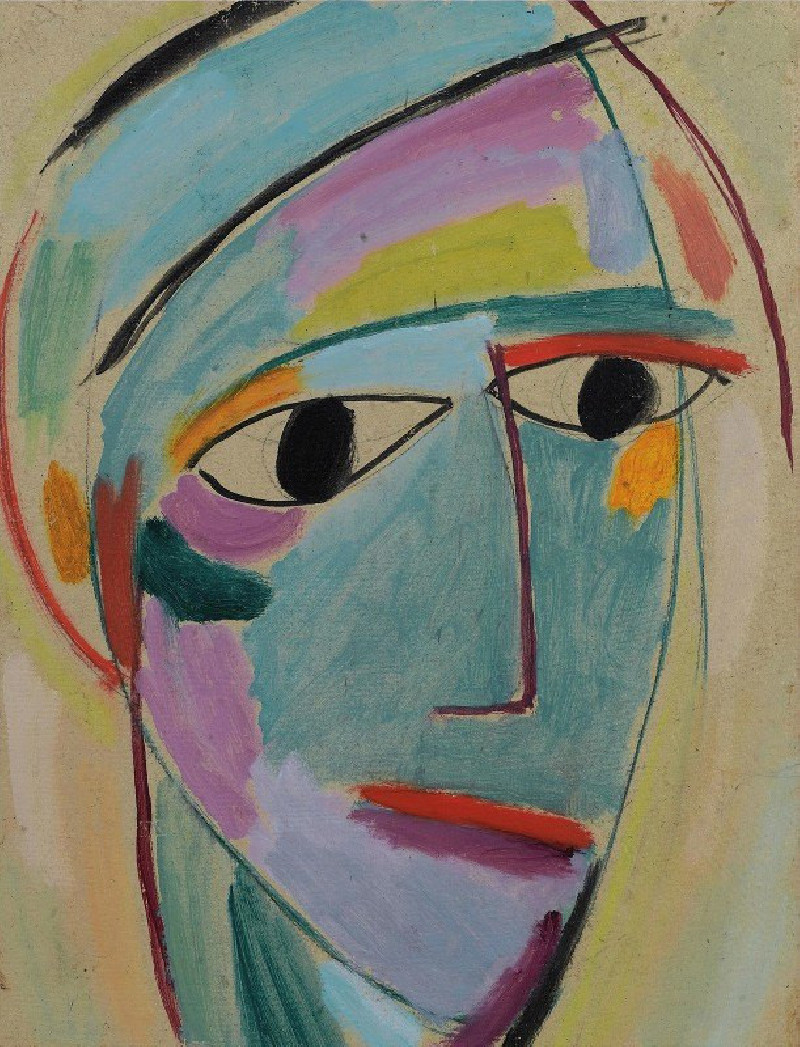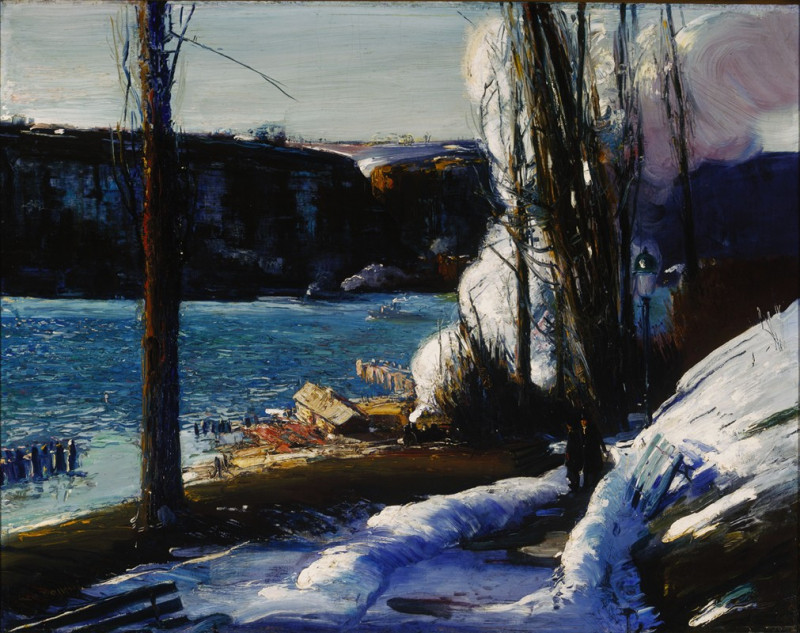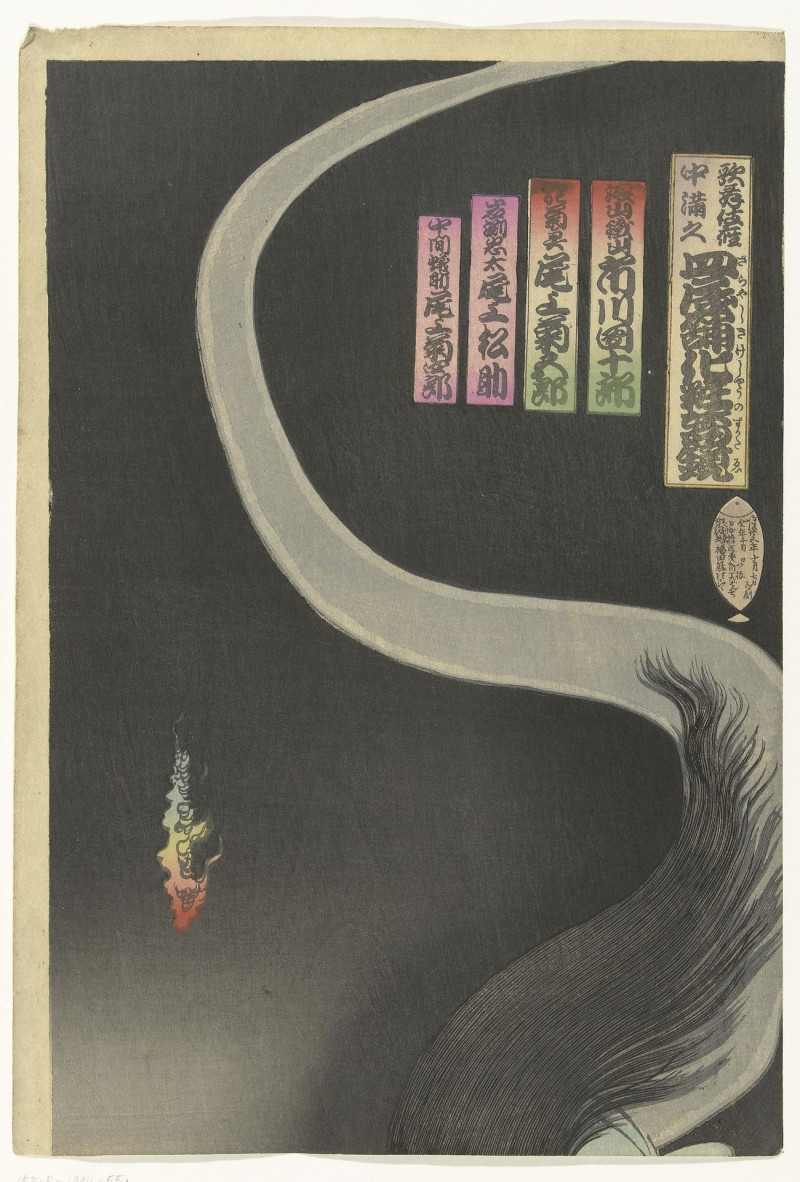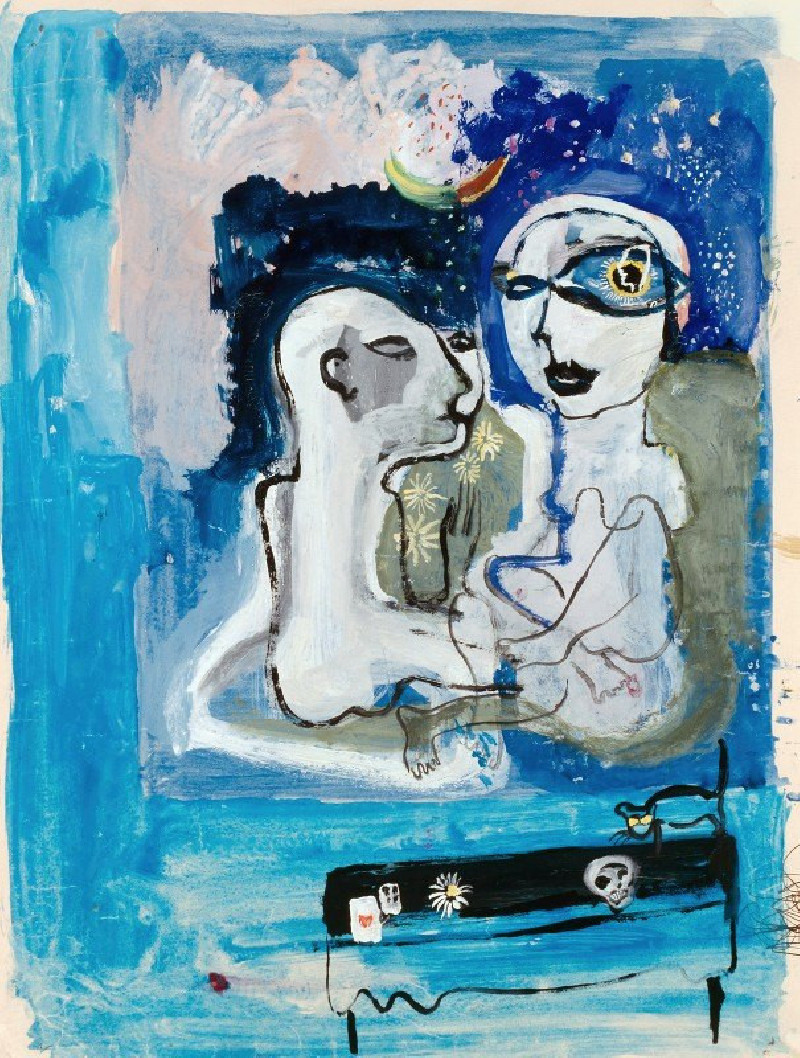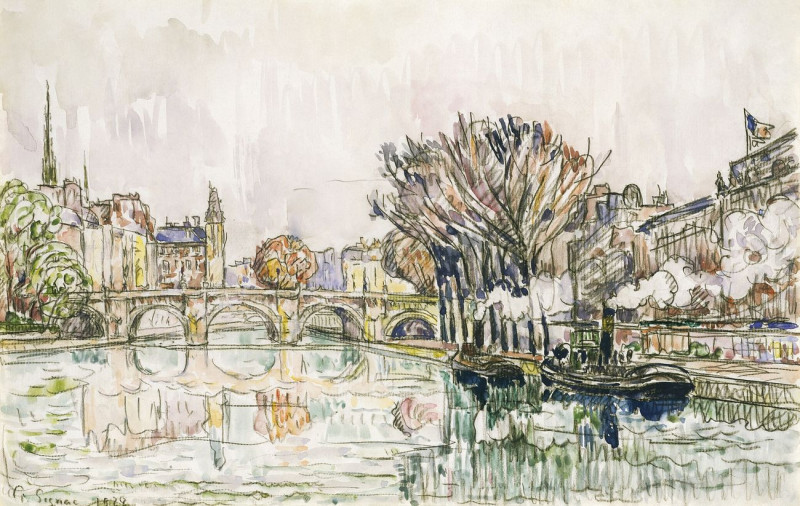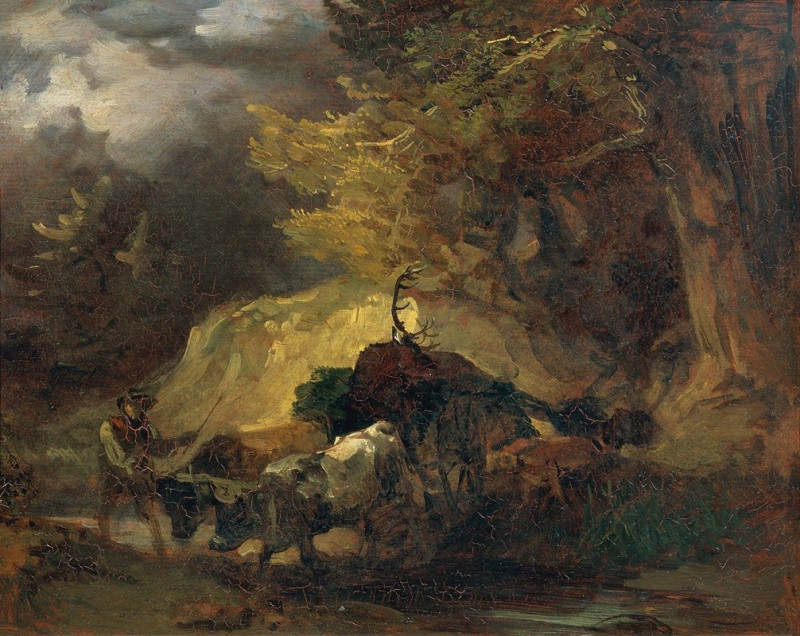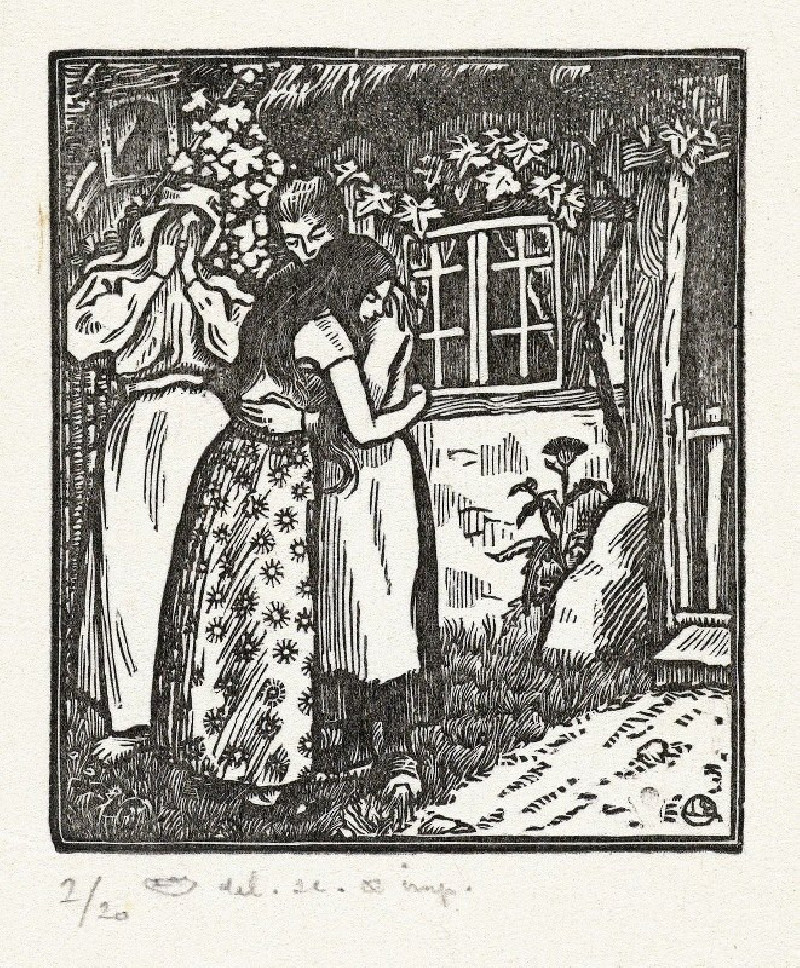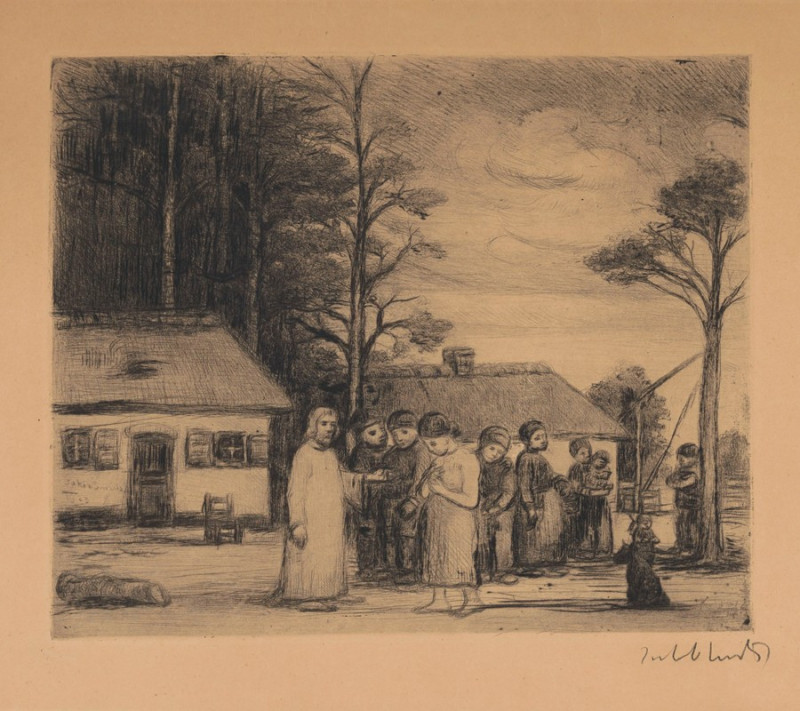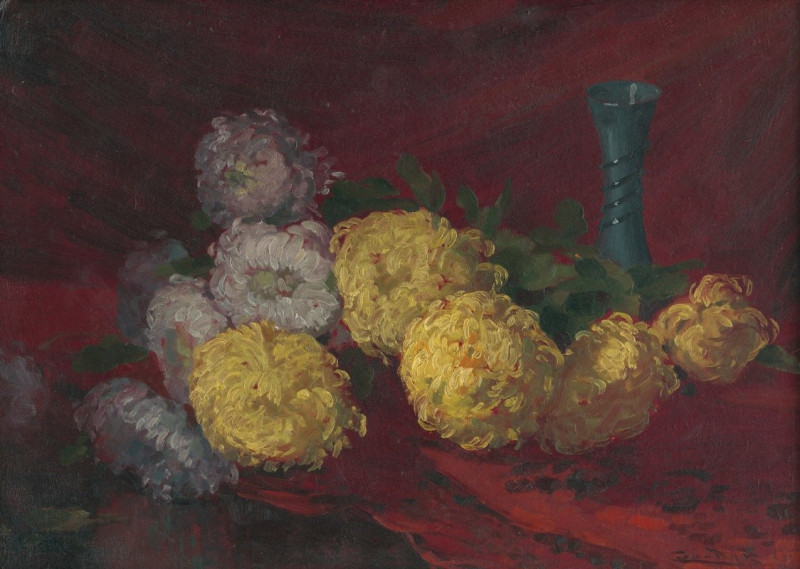The Hay Wagon (after c. 1650)
Technique: Giclée quality print
Recommended by our customers
More about this artwork
**Philips Wouwerman’s painting, "The Hay Wagon," is a captivating depiction of rural life in the 17th century. This scene is imbued with the daily activities of common folk, illustrating a moment revolved around the essential task of hay harvesting. Set against a vast, serene backdrop, the painting showcases a hay wagon heavily laden, dominating the central focus of the composition. A group of rustic figures, from farmers to horse riders, animate the scene with their varied engagements, suggesting a narrative of cooperation and rural livelihood.The foreground is lively with movement: horses, both mounted and unmounted, display a sense of readiness and rest. People in simple, era-appropriate attire engage with each other, the hay, or the animals, creating a balanced interaction of human and nature. The quietly flowing water on the left where a boat is moored adds a reflective quality to the scene, contrasting with the busyness of the land. A dog, alert and watchful, further animates the foreground, adding another layer to life depicted by Wouwerman.The artist’s use of light is subtle yet effective, highlighting the hay and reflecting off the waters, emphasizing the vital role of these elements in the lives depicted. The expansive sky, filled with soft clouds, suggests the passage of time and the transcendence of nature over human endeavor."The Hay Wagon" not only reflects Philips Wouwerman’s acute attention to detail and prowess in depicting everyday rural scenes but also serves as a visual record of the historical lifestyle, work, and environment. The painting draws viewers into a contemplative appreciation of the harmonious and enduring rhythm of rural life.
Delivery
Returns
Philips Wouwerman (also Wouwermans) was a Dutch painter of hunting, landscape and battle scenes.
Philips Wouwerman was one of the most versatile and prolific artists of the Dutch Golden Age. Embedded in the artistic environment and tradition of his home town of Haarlem, Wouwerman made an important and highly influential contribution to the canon of seventeenth-century Dutch painting.

